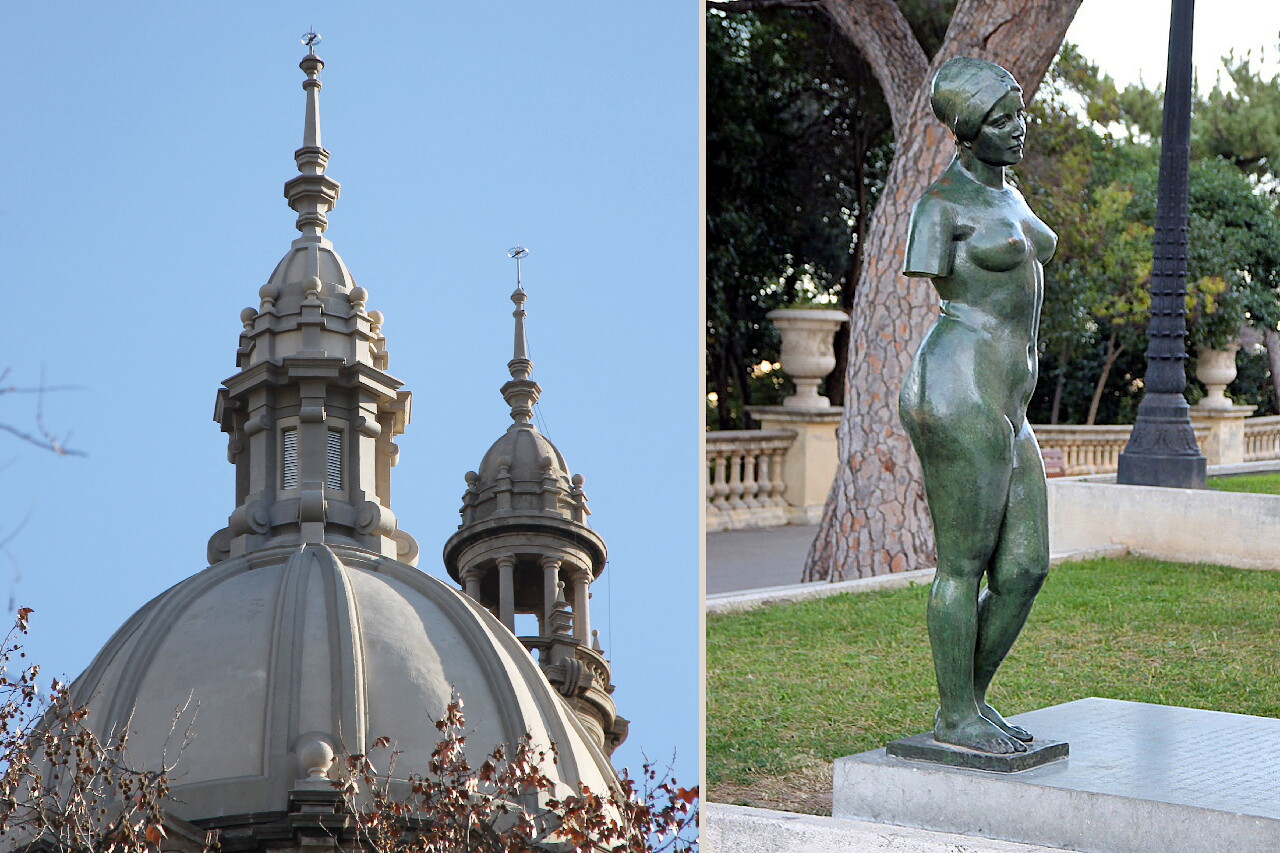Palau Nacional de Catalunia
Like many architectural objects in Barcelona, this monumental structure appeared thanks to the International Exhibition of 1929. Until the beginning of the 20th century, the slopes of Montjuic Mountain, adjacent to the central quarters of the city, were practically uninhabited: there were only quarries and a few secluded villas. Projects to turn the mountain into a residential area have been discussed periodically since 1894, but have not been developed due to high costs. Things got off the ground in 1924, when an architectural competition was announced in preparation for the International Exhibition. As a result, the project of the palace in the style of the Spanish Renaissance, created by Eugenio Cendoya and Enric Catà, was chosen. Construction began on June 30, 1926, and the Palace was opened as the main pavilion of the International Exhibition on May 20, 1929, hosting the El arte en España (Art in Spain) exhibition. Since 1934, the National Art Museum of Catalonia has been located here. The building has two floors with a central hall covered by a dome, with two side wings with small domes. In the rear section there is a Large hall covered by an elliptical dome with four towers at the corners. Despite the classic look, only industrial materials were used in the construction: concrete, steel supporting structures and artificial stone cladding.
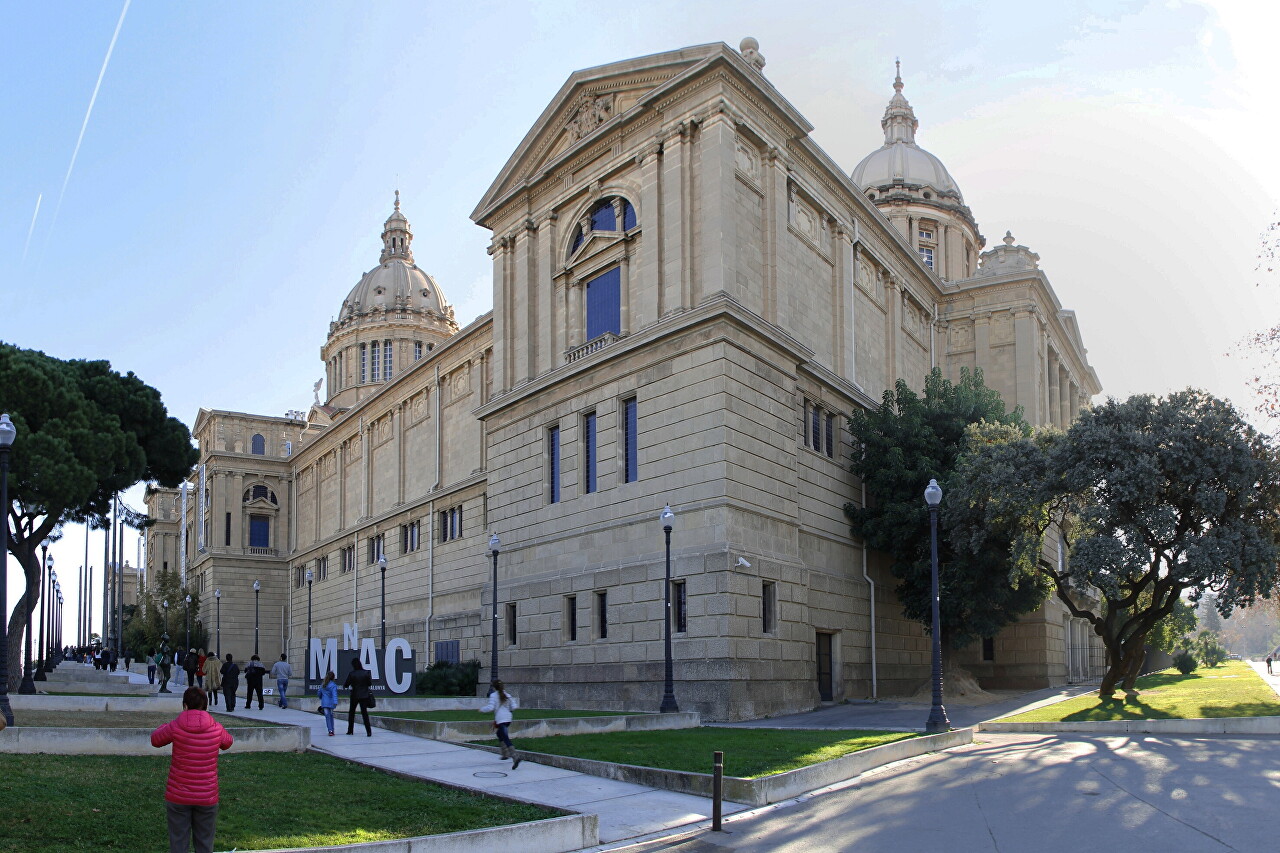
..
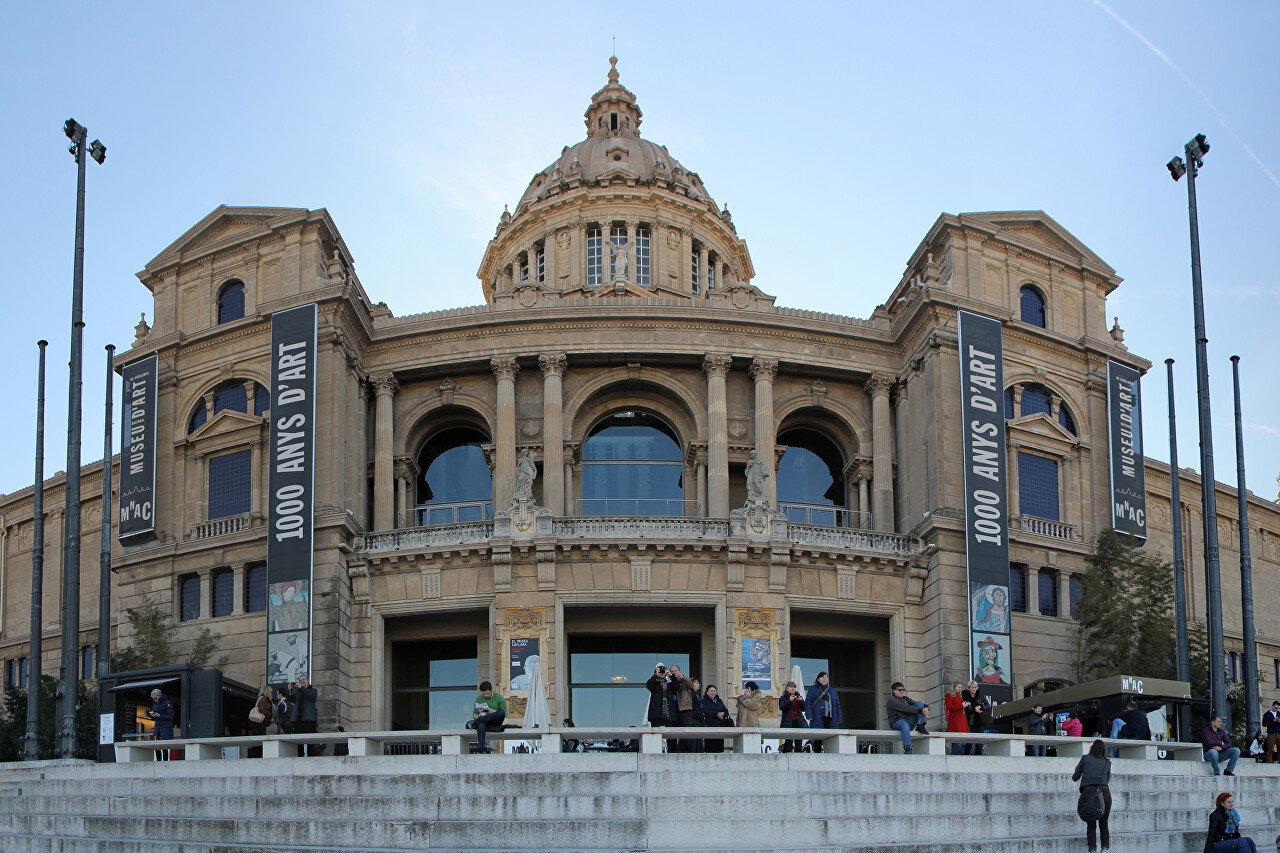
..
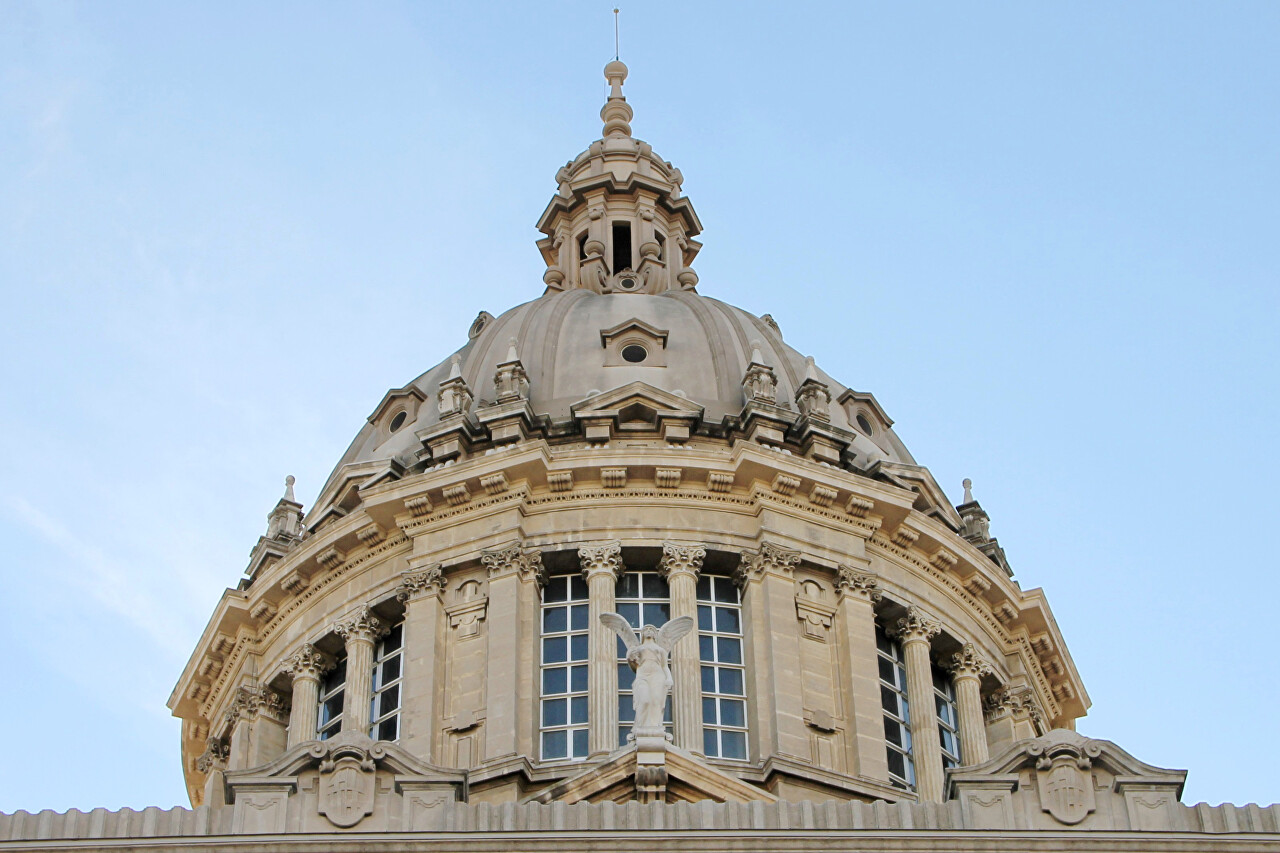
..
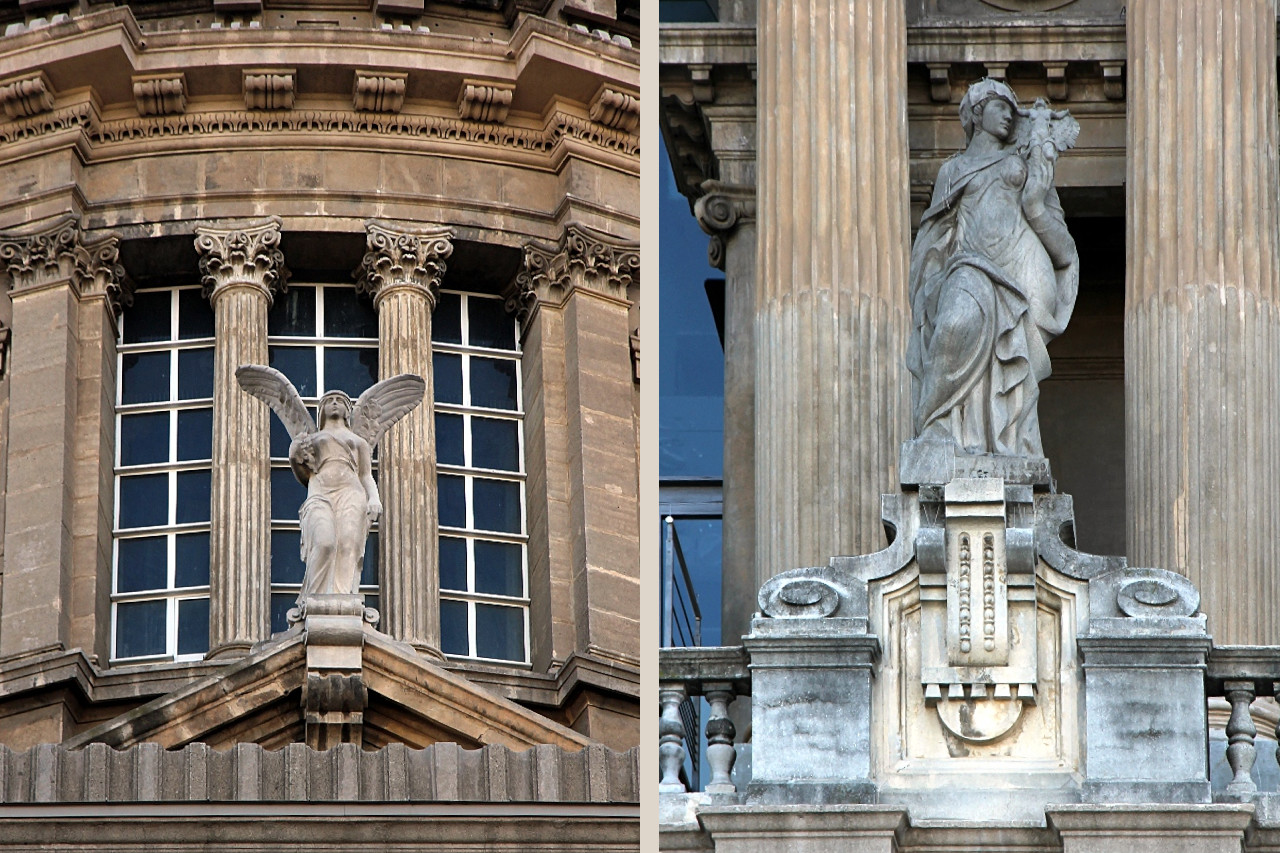
У стен здания установлено множество скульптур, в частности единственная сохранившаяся в Барселоне работа Аристидиса Майоля (Aristide Maillol). Скульптура Tors de l'Estiu, часто называемая Венера, изготовлена в 1911 году.
